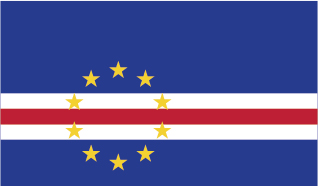Cape Verde or Cabo Verde, officially the Republic of Cabo Verde, is an island country in the central Atlantic Ocean. It was an uninhabited island which was first discovered and colonized by the Portuguese in the 15th century. It is comprised of a group of nine inhabited islands and one uninhabited one and lies 620 km off the coast of Senegal in Africa. It remained under the Portuguese control until 1975,
This archipelago is divided into the Barlavento (Windward) group to the north and the Sotavento (Leeward) group to the south. Praia, on Santiago, is the capital city and the largest port, which has been used since the 19th century is Mindelo, on São Vicente.
Agriculture is not easy in Cape Verde - with approximately only 10-11% of the island’s land being suitable to farm - and is affected by the severe droughts that affect the islands. The harsh conditions have long posed severe challenges to agricultural pursuits, resulting in irregular crop output and periodic bouts of large-scale famine. The government have made a significant effort to curb intense water erosion and expand the limited areas available for subsistence and small-scale commercial farming.
Crops grown for local consumption include corn (maize), sugarcane, castor beans, broad beans, potatoes, and peanuts (groundnuts). There is a heavy reliance on imported foodstuffs, however, and the importation of food has long been an absolute necessity. The waters around the islands are a great source of fish, including tuna and lobsters. The fishing industry is important for both domestic consumption as well as export. At the beginning of the 21st century, about one-fifth of Cabo Verde was forested, helped by the governmental active reforestation efforts.
Christopher Columbus visited the island of Boa Vista in 1498 as well as Charles Darwin who once spent 21 days in the islands. Vasco da Gama also visited Santiago in 1497.
